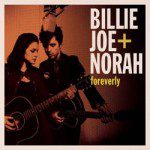Mary Gauthier Tells Her Own Story
(Originally posted on Troubadour Blues: A Music Documentary)
Mary Gauthier is on tour right now, doing about the most courageous thing I’ve ever seen an artist do. She gets up on stage in front of a roomful of strangers night after night and unflinchingly tells her life story: a litany of abandonment, resentment, trouble and pain, ending on notes of hope and redemption.
No words can adequately describe the feeling of watching Gauthier reach down deep into her soul and sing the ten songs that comprise her autobiographical album, The Foundling. I have never heard a concert hall get so quiet. It made some people visibly uncomfortable, and maybe half a dozen left midway through the set. For the rest, it was a powerfully cathartic experience.
“A child disconnected who no longer cries, with a prisoner’s stare and an orphan’s eyes.” The outlines of Gauthier’s story have been told in countless interviews and press bios: how she was abandoned by her birth mother, left at a Catholic orphanage in New Orleans.
“Mama here, Mama gone.” Adopted as a child by a small-town Louisiana family, she acted out her pain in tomboyish escapades as a child, delinquency and drug abuse as an adolescent.
“I’d like to stay now but I don’t know how.” I swear this audience isn’t even breathing during the songs. Mary breaks the flow of music to describe her transition into adulthood, to tell us how her life has been a series of abrupt departures (and to let us catch a breath). “Hold me honey til I’m gone again.”
Orphans and bastards are always drawn to show business, she says as she reaches what seems like the centerpiece of the set. “I make a living at the sideshow,” she sings. “It’s the place that the wounded go.”
I think about the other songwriters in my film about troubadours, and how many of them are troubled souls who found their way out of despair by writing and singing songs.
“I got a heart that’s ripped, I got a soul that’s torn, I got a hole in me like I was never born.”
Earlier, Mary had said it was the greatest challenge she had ever faced as a writer. How to write a cycle of songs based on deeply personal experiences, in which each song could stand alone but each contributed to a larger story. I had read in an interview before the show that she had wanted to make this record for a long time, but had to wait to become a good enough songwriter.
I think she has far surpassed those modest goals. I’ve always loved the idea of a song cycle, an album of connected songs, and The Foundling is easily on a level with some of my favorites: Willie Nelson’s Red Headed Stranger, Tom Waits’s Frank’s Wild Years, Pete Townshend’s Quadrophenia. Mary has gone these great albums one better, writing in her own voice rather than that of a fictional character, taking full ownership of the songs.
The Foundling serves as an expansion and an explication of Mary’s already impressive body of work, allowing us to connect the dots between the teenage misfit of “Drag Queens and Limousines” and the bitter alcoholic of “I Drink” and the lonely losers of “Christmas in Paradise” and “Camelot Motel.”
There’s a terrible pressure in music to be a human jukebox, to play your familiar hits, to avoid anything that challenges an audience and makes them think too much. I’ve been seeing this a lot in recent months. Peter Wolf has put out album after album of brilliant material, but the crowd on his recent tour wanted to hear “Love Stinks” and “Centerfold.” Dave Alvin has reinvented himself time and time again, written dozens of great songs, but people clamor for “Marie, Marie.” Garrison Starr can’t get offstage without playing “Superhero.”
Nothing wrong with that; part of the job of being a performer is entertaining the crowd. But with her performance of The Foundling, Mary Gauthier showed me once again that a true artist must live up to a deeper commitment — to be fearless, to push oneself, to rise to new challenges, to prune off old branches and allow room for new growth. If the artist leads, the audience will follow.





